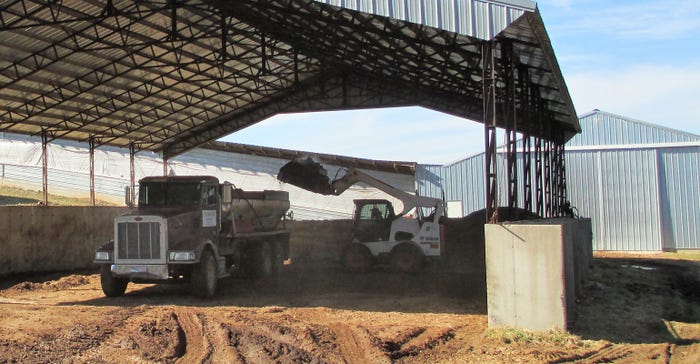March 16, 2022

Just how high can the cost of fertilizer get? Do we have other options? What about poultry manure?
With prices on the rise, I am still getting questions asked about this issue. I have often wondered and have been asked several times about the dollar value of poultry litter products as they relate to the cost of traditional rock fertilizers. I have used poultry litter in the past with mixed results.
Keep in mind the following information:
Poultry litter is not often tested for analysis, so guaranteed percentages of N-P-K are not readily available.
Poultry litter is not consistent, as it may or may not contain more filler than manure at any given time. (Ask the provider if this is a decrusting, or is this a total cleanout of the house?)
Availability and delivery of poultry litter is based on the time of year and house cleanouts.
Some litter is composted while others may come straight out of the barn, which may cause a few problems. Composted is better.
Understand there may be a few additional benefits to applications of poultry litter other than fertility, such as increased microorganism action and an improved carbon ratio.

LOAD OUT: Not all poultry litter is the same. Farmers buying it to use on crop ground need to ask questions of their supplier before spreading.
Poultry litter analysis
Let us assume, for mathematical comparison purposes, the test analysis results for poultry litter would be 35-35-35 per ton. If one wishes to dispute this point, then ask for a test. Remember the test will only be for the load at hand, as litter is not usually consistent. You can still use the same method to calculate your own results with your test results.
Using the suggested application rate of 2-tons-per-acre poultry litter (70-70-70), what would be the breakeven point if you were to choose traditional rock fertilizer over litter?
The current fertilizer prices were obtained through local fertilizer dealers and used to calculate the following:

Adjusting fertilizer
Solving the P level first, as DAP also carries N, the following was determined:
Seventy pounds divided by 0.46 equals 152.17 pounds of DAP (18-46-0) will meet the need. This also provides 27.39 pounds of N (152.17 x 0.18 = 27.39), which can be subtracted from the N yet needed. Seventy pounds of N needed minus 27.39 pounds already applied through DAP leaves 42.61 pounds yet to be obtained.
Working to solve the additional N requirement, using ammonium sulfate (21-0-0-24) as our source, the following was calculated: 42.61 pounds/0.21 = 202.9 pounds of ammonium sulfate added to the mix. Both N and P are now met.
This also adds additional amounts of sulfur to your soil, as well, which can be a good thing from time to time. Urea (treated), as the N source, might make it cheaper, but no sulfur would be added. Coated urea has a better release period of nitrogen over a longer period of time than poultry manure.
Finally, the K element. Potash will be used to round out the blend as follows: 70 pounds/0.60 = 116.66 pounds of potash will be needed to complete the comparison.
Assess prices
The cost of these items are as follows:

For reference, the grand totals in 2020 were $96.59 and $91.00, respectively.
Another area of concern may be tons delivered per load. In rock fertilizer blends, each element is weighed to complete the mix matching your soil test recommends. After all, when you receive a load of corn or price your hay at “X” amount per ton, you usually weigh the load.
If you purchase a load of poultry litter, you might want to ask for a weigh stub. A little extra is to your advantage, but less is not. Without a test analysis or a weigh ticket, you are only guessing at the load.
At this rate, 1 ton of poultry litter delivered and spread per acre should be equal to $217.25 or $200.43 per acre of rock fertilizer. Anything higher than this is more than the cost of rock.
So, are the additional benefits discussed earlier worth it? Also keep in mind that manures react somewhat differently than rock fertilizer when applied to your fields.
Maybe, poultry litter has advantages at times. Just make sure you are getting what you pay for.
Halleran is an MU Extension agronomy specialist based in Hickory County. He writes from Hermitage, Mo.
You May Also Like




